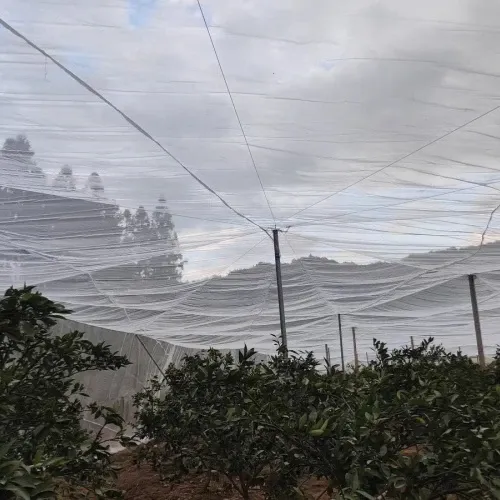-
 Afrikaans
Afrikaans -
 Albanian
Albanian -
 Amharic
Amharic -
 Arabic
Arabic -
 Armenian
Armenian -
 Azerbaijani
Azerbaijani -
 Basque
Basque -
 Belarusian
Belarusian -
 Bengali
Bengali -
 Bosnian
Bosnian -
 Bulgarian
Bulgarian -
 Catalan
Catalan -
 Cebuano
Cebuano -
 China
China -
 Corsican
Corsican -
 Croatian
Croatian -
 Czech
Czech -
 Danish
Danish -
 Dutch
Dutch -
 English
English -
 Esperanto
Esperanto -
 Estonian
Estonian -
 Finnish
Finnish -
 French
French -
 Frisian
Frisian -
 Galician
Galician -
 Georgian
Georgian -
 German
German -
 Greek
Greek -
 Gujarati
Gujarati -
 Haitian Creole
Haitian Creole -
 hausa
hausa -
 hawaiian
hawaiian -
 Hebrew
Hebrew -
 Hindi
Hindi -
 Miao
Miao -
 Hungarian
Hungarian -
 Icelandic
Icelandic -
 igbo
igbo -
 Indonesian
Indonesian -
 irish
irish -
 Italian
Italian -
 Japanese
Japanese -
 Javanese
Javanese -
 Kannada
Kannada -
 kazakh
kazakh -
 Khmer
Khmer -
 Rwandese
Rwandese -
 Korean
Korean -
 Kurdish
Kurdish -
 Kyrgyz
Kyrgyz -
 Lao
Lao -
 Latin
Latin -
 Latvian
Latvian -
 Lithuanian
Lithuanian -
 Luxembourgish
Luxembourgish -
 Macedonian
Macedonian -
 Malgashi
Malgashi -
 Malay
Malay -
 Malayalam
Malayalam -
 Maltese
Maltese -
 Maori
Maori -
 Marathi
Marathi -
 Mongolian
Mongolian -
 Myanmar
Myanmar -
 Nepali
Nepali -
 Norwegian
Norwegian -
 Norwegian
Norwegian -
 Occitan
Occitan -
 Pashto
Pashto -
 Persian
Persian -
 Polish
Polish -
 Portuguese
Portuguese -
 Punjabi
Punjabi -
 Romanian
Romanian -
 Russian
Russian -
 Samoan
Samoan -
 Scottish Gaelic
Scottish Gaelic -
 Serbian
Serbian -
 Sesotho
Sesotho -
 Shona
Shona -
 Sindhi
Sindhi -
 Sinhala
Sinhala -
 Slovak
Slovak -
 Slovenian
Slovenian -
 Somali
Somali -
 Spanish
Spanish -
 Sundanese
Sundanese -
 Swahili
Swahili -
 Swedish
Swedish -
 Tagalog
Tagalog -
 Tajik
Tajik -
 Tamil
Tamil -
 Tatar
Tatar -
 Telugu
Telugu -
 Thai
Thai -
 Turkish
Turkish -
 Turkmen
Turkmen -
 Ukrainian
Ukrainian -
 Urdu
Urdu -
 Uighur
Uighur -
 Uzbek
Uzbek -
 Vietnamese
Vietnamese -
 Welsh
Welsh -
 Bantu
Bantu -
 Yiddish
Yiddish -
 Yoruba
Yoruba -
 Zulu
Zulu
anti hail
The Importance of Anti-Hail Measures in Agriculture
Hailstorms can wreak havoc on agricultural practices, resulting in tremendous financial losses and disrupted harvests. Farmers around the world face the challenge of unpredictable weather conditions, and hail is one of the most damaging forms of precipitation. As climate change continues to alter weather patterns, the need for effective anti-hail measures has never been more pressing.
Hail is formed in thunderstorms when updrafts carry water droplets high into cold areas of the atmosphere. There, the droplets freeze and accumulate into balls of ice, which can fall to the ground with alarming speed and force. The impact of hailstones can devastate crops, shatter glass in greenhouses, and cause serious damage to machinery. The resulting economic ramifications can be dire, particularly for small-scale farmers who rely heavily on their seasonal yields.
The Importance of Anti-Hail Measures in Agriculture
Another innovative approach is the use of cloud seeding technology. This involves dispersing substances into the atmosphere that encourage precipitation. While primarily aimed at increasing rainfall, certain cloud seeding techniques can also potentially weaken hail formation. By disrupting the updrafts that contribute to hailstone growth, scientists hope to reduce the frequency and severity of hailstorms, providing a proactive solution to farmers facing hail threats.
anti hail

In addition to these preventive strategies, farmers are also encouraged to adopt comprehensive risk management plans. This includes diversifying crops, using insurance policies, and investing in early warning systems that can predict extreme weather events. By adopting a multifaceted approach, farmers can better safeguard their livelihoods against the unpredictable nature of hailstorms.
Education and awareness also play a crucial role in the effectiveness of anti-hail measures. Many farmers may not be familiar with the latest techniques or technologies available for hail protection. Agricultural extension services and community workshops can provide valuable information, equipping farmers with the knowledge they need to make informed decisions about hail risk management.
Looking to the future, the development of new materials and technologies holds promise for improving anti-hail measures even further. Research into resilient crop varieties, advanced forecasting models, and more effective physical barriers could transform how farmers protect their fields from hail damage. As the agricultural industry continues to innovate, collaboration between scientists, policymakers, and farmers will be essential for creating sustainable solutions to this ongoing challenge.
In conclusion, the importance of robust anti-hail measures cannot be overstated in the face of increasingly erratic weather patterns. By employing a combination of protective technologies, risk management strategies, and educational efforts, farmers can significantly mitigate the impact of hailstorms on their crops. The resilience of the agricultural sector depends on its ability to adapt and respond to these environmental challenges, ensuring food security for future generations.
-
Shipping Plastic Bags for Every NeedNewsJul.24,2025
-
Safety Netting: Your Shield in ConstructionNewsJul.24,2025
-
Plastic Mesh Netting for Everyday UseNewsJul.24,2025
-
Nylon Netting for Every UseNewsJul.24,2025
-
Mesh Breeder Box for Fish TanksNewsJul.24,2025
-
Expanded Steel Mesh Offers Durable VersatilityNewsJul.24,2025











